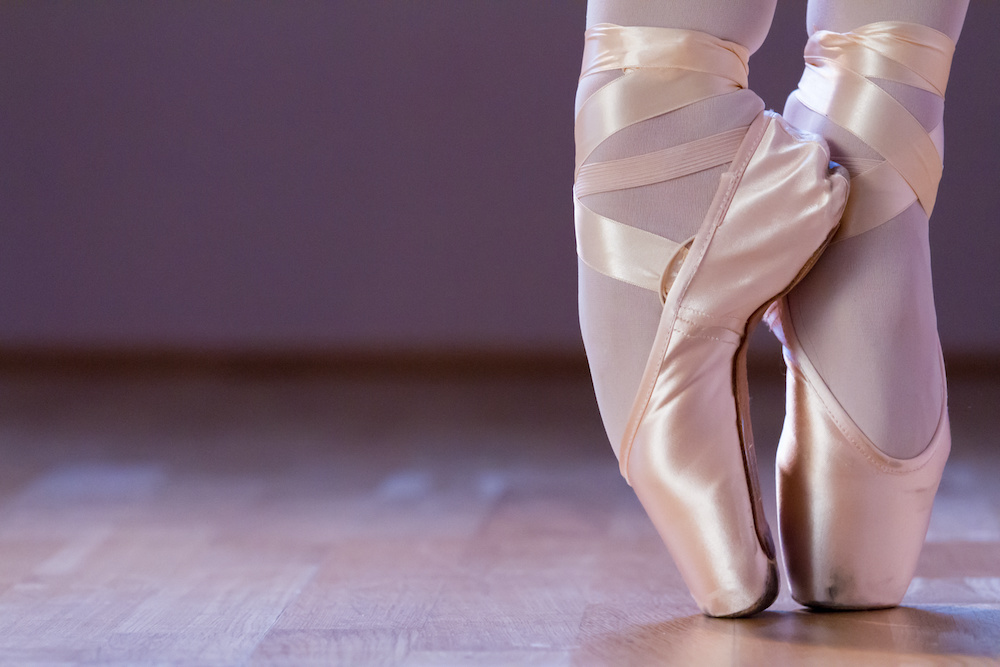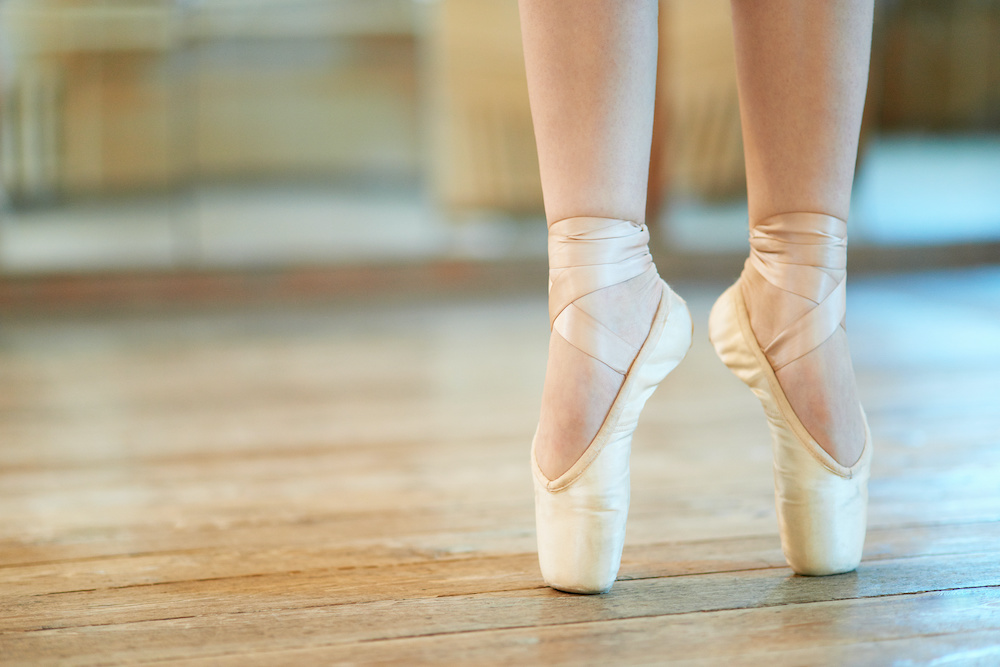How To Break In Pointe Shoes: A Simple Guide for Beginners
We may earn a commission for purchases using our links. As an Amazon Associate, we earn from qualifying purchases.
Every ballerina who goes on pointe has to face the same problem at this point in their ballet journey.
They have to learn how to break in pointe shoes. As beautiful as they are, pointe shoes can be challenging to get used to.
The process of learning how to break in new pointe shoes as a beginner can seem strange, painful, and impossible at times.
Ultimately, that is all part of the process. Today, beginners ready to go en pointe can learn about some of the most widely used techniques for breaking in new pointe shoes.
Every pair of pointe shoes that you wear from this point forward will need to be broken in; it’s time to learn how to do just that!
How Do You Break in Pointe Shoes for Beginners
How do you break in pointe shoes as a beginner?
Breaking in pointe shoes relies on your body temperature and sweat to help the shoes form to your feet, and this will happen throughout your ballet classes.
If you try to start your first class without doing any prep work on new shoes, you will be in more pain than necessary.
The best way on how to break in new pointe shoes is simply to wear them, but there are some things that you can do to help speed up the process.
Here are some of the tried-and-tested methods that you can also do:
Method #1: Exercise in Demi Pointe
The primary thing that you need to do to break in your shoes is to wear them frequently.
Once you have learned how to put on your shoes properly, wear them often.
Walking around your house on demi-pointe (that is, not fully on top of the box, but partway bent) is a good idea.
Doing simple grand pliés and rolling up to full pointe will allow the shank to soften gradually.
You want the shank to bend with your foot as you roll through, so going through this motion frequently will help soften the shoes.
Method #2: Gently Crush the Box
One of the reasons going en pointe can be painful is how stiff the box is in new shoes.
To speed up the process of breaking in shoes, you can gently crush the box in the pointe shoe by using your heel.
You don’t want to destroy the box completely; you only want to reduce the top of the shoes' stiffness.
Method #3: Make It Flexible
Another thing that you can do to make the shoe more comfortable is to bend the shank.
Doing this will increase the flexibility of the shoe so that you are more comfortable.
Keep in mind that shoes come in different stiffnesses depending on your style and foot shape.
Be careful when bending the shank, as you need to be sure that you do not completely break it.
Method #4: Tip Toe Around
As a beginner, your teacher is likely to introduce this technique to you.
You can tip-toe around your dance classroom while fully over the box and on pointe.
It is a very simple practice that helps break in the shoe while also getting used to being completely on pointe.
It can be strange to be up so high at first! When doing this, it is key that you keep good technique to prevent injury.
Your big toe should be directly under your ankle when on pointe.
If you notice that your weight continuously tips backward, you are not fully over your box.
Build up your strength and gradually break in your shoes with these techniques.
Make sure that you only do this when supervised in a classroom so that you don’t risk building bad techniques or injuring yourself.
How Long Does It Take To Break in Pointe Shoes?
How long it will take to break in your pointe shoes will depend on a number of factors:
- How many hours a week you are dancing on them
- The humidity level of your classroom
- How strong your feet are
- What level of dancing you are doing on pointe
- How much your feet sweat
- How you care for your shoes after class
It will usually take between two and three classes to feel like your shoes are breaking in for beginners.
Many beginners will say it feels like it takes between eight and 10 hours for their shoes to be fully broken in.
If you physically break the shoes in by gently crushing the boxes or using any other non-dancing techniques, they may break-in faster.
When shoes break-in faster, you are going to feel very comfortable in them sooner.
The sooner that they are broken in, the sooner they will need to be replaced as well.
There are pros and cons to quickly breaking in your shoes versus allowing the shoes to break in while you are in class.
If you end up dancing professionally, you will want your shoes to be fully broken in before you perform.
Beginners and those still learning, though, should aim to extend the lifetime of their pointe shoes by breaking them in more gradually.

Do You Have To Break in Pointe Shoes?
All pointe shoes will need to be broken in to some extent.
Even experienced ballerinas who go through pointe shoes weekly have to do a few things to ensure that their shoes will work for them.
The thing about breaking in your pointe shoes is that it will happen whether you do it intentionally or not.
Just by wearing your shoes, they will break-in.
While you do not have to do anything special besides wearing your shoes to break them in, you are more likely to find success on pointe if you make an effort to break them in.
How Do Ballerinas Break in Their Shoes?
Throughout history, ballerinas have been breaking in ballet shoes in a number of ways!
Professional ballerinas have been seen slamming the boxes of new pointe shoes against doorways to break the boxes in.
That is a technique that beginners shouldn’t try, though.
Apart from that, usually, professional ballerinas will do some or all of the following things to prepare their shoes:
- Darn the box to improve traction and prevent fraying
- Using a hammer to soften the box
- Roughing up the sole with a file
- Sewing on elastic and ribbons as needed
Dancers who prepare their shoes in this way are expecting to go through their shoes very quickly due to their dancing difficulty.
Their shoes need to be fully broken in by the preparation process so that they can get dancing on them comfortably right away.
For beginners, these types of processes aren't necessary.
Breaking in Pointe Shoes: Ballerina Tips for Beginners
Breaking in ballet shoes is something that every ballerina who wants to dance on pointe has to go through at some time.
What do experienced ballerinas have to say to beginners about breaking in pointe shoes?
Here are a few tips that you may find useful as you begin your journey into pointe!
Do Not Get Your Shoes Wet
The satin on your pointe shoes will shrink if it gets wet, so you want to avoid getting your shoes wet with water at all costs.
You can use a tiny bit of water to shrink parts of the shoes intentionally, but you should not get your entire shoe wet for any reason.
Allow Your Shoes To Dry Out
Ideally, you should allow your shoes to dry out from any sweat that may have built up on them while you were dancing.
They should be completely dry before you wear them again.
This might not be possible if you only own one pair of shoes and are dancing daily.
If you are dancing daily, you should consider getting more than one pair of shoes to rotate between.
Prepare for Pointe With Demi-Pointe Shoes
Another way to prepare for pointe shoes and know more about what is necessary to break them in is to wear demi-pointe shoes.
Demi-pointe shoes are made specifically to prepare a dancer to go on pointe.
These shoes make your footwork harder while you do ballet, which will help better prepare your feet for going on pointe.
You can use these throughout pre-pointe classes to help prepare yourself to be ready and strong enough for going on pointe when the time comes.
How To Break in Pointe Shoes: Going En Pointe Today
Learning how to break in pointe shoes is a big step in every beginner’s journey.
Do you feel more equipped to start the process with your first pair now?
Don’t be afraid of trying out these different methods and seeing what works best for you.
Every ballerina eventually develops a process that works best for them and their pointe shoes; you will do the same.
With these tips and tricks, you can make the process easier for yourself.
Remember to save this guide to check back on the next time you get a pair of pointe shoes because every pair will need to go through this process!

